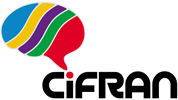Day 1: Linguistic Contexts
• Feedback on classroom observations and the needs of teachers/trainers (e.g. mistakes at the level of phonemes of the phonotactics of complex syllables, and of prosody).
• Presentation of the main observations and analyses concerning speech perception and production in a second/foreign language.
• Terminological update (e.g. phonetic correction, phonetics vs. phonology, phonemes, phonotactics, prosody, fluency, accuracy, IPA, articulatory criteria).
• Presentation of the phonological and phonetic systems of the language being learned; comparisons with other languages (e.g. English, French, Spanish, Mandarin, Arab, Japanese).
• Reflections on the sociophonetic variations of the language being learned and the consequences for phonetic correction in a second/foreign language.
Day 2: Pedagogical interventions
• Review of terminology of the phonological and phonetic systems.
• Discussions on various commonly used techniques for teaching pronunciation.
• Presentation of advances in cognitive neuroscience suggesting explicit teaching strategies liable to correct faulty pronunciations.
• Presentation of advances in cognitive neuroscience suggesting implicit teaching strategies liable to correct faulty pronunciations.
• Presentation of LeBel, Mercier, and Massé’s Ten Great Means for Phonetic Correction (2016).
Day 3: Classroom practice, Learner Group 1
• Demonstrations of correcting pronunciation errors with L2/FL learners; case studies (videos).
• Demonstrations of correcting pronunciation errors with L2/FL learners; work with real learners (group 1).
• Under supervision, participants work with learners (group 1) in a learning situation; feedback.
• Correction of previously reported pronunciation errors.
• Discussions among participants regarding their choice of Great Means for optimal phonetic correction.
Day 4: Classroom practice, Learner Group 2
• Demonstrations of correcting pronunciation errors with L2/FL learners; video case studies.
• Demonstrations of correcting pronunciation errors with L2/FL learners; work with real learners (group 2).
• Under supervision, participants work with learners (group 2) in a learning situation; feedback.
• Correction of previously reported pronunciation errors.
• Discussions among participants regarding their choice of Great Means for optimal phonetic correction.
Day 5: Real classroom practice, Learner Group 3
• Demonstrations of correcting pronunciation errors with L2/FL learners; video case studies.
• Demonstrations of correcting pronunciation errors with L2/FL learners; work with real learners (group 3).
• Under supervision, participants work with learners (group 3) in a learning situation; feedback.
• Correction of previously reported pronunciation errors.
• Discussion among participants regarding their choice of Great Means for optimal phonetic correction.






